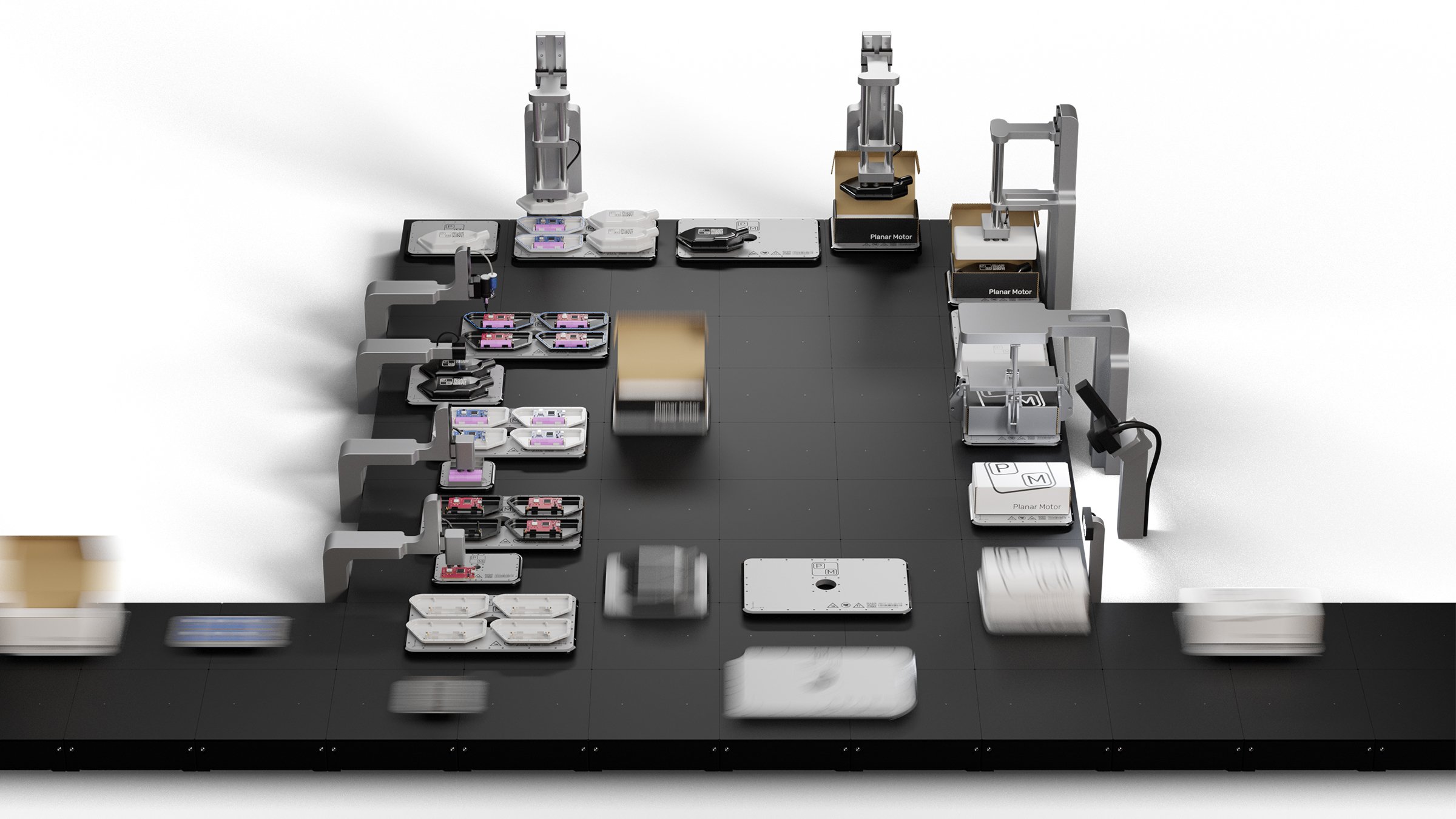Rockwell Automation: Planar Motors- Next Step in Flexible Manufacturing
One of the largest challenges facing manufacturers is an increasing demand for flexibility and diversified product options. As the research and development are accelerating, product design cycles are getting shorter, with a wider range of products being released in a shorter time, and consumers demanding ever more customization options. Lost productivity due to line changeovers is becoming a major headache for manufacturers.
Traditionally, the development of the assembly line made mass production economically feasible, but at the cost of flexibility. Since each manufactured product must travel down the line at the same speed, the slowest station on the assembly line becomes a bottleneck, limiting production rates. Famously, in the development of the automobile assembly line, Henry Ford remarked that “Any customer can have a car painted any color that he wants so long as it is black.” The decision to limit paint color was made because at the time, the only color that could dry fast enough was black – choosing another color would have slowed down the entire assembly line. Furthermore, any changes in the product design such as the size and shape of the product often meant the production line needs to be rebuilt, leading to huge cost overhead with each change.
A major step forward in flexibility came with the development of independent cart technologies, such as Rockwell Automation’s iTRAK® and MagneMover® systems. This style of conveyance effectively allows for variable pitch processing, reducing the impact of bottlenecks. In addition, independent carts are naturally more modular, permitting improved flexibility and scalability, while reducing downtime from changeovers. Using MagneMover®, products must no longer visit every station on an automation line, allowing for a wider range of products to be made on the same product line, with no changeover downtime. Finally, the fundamental concept on which independent cart technologies are built – linear motors – have fewer moving parts than traditional conveyance solutions, meaning less maintenance and downtime as well as improved processing speeds.
Planar motor solutions, like the XBots developed by Planar Motor Inc, is an additional option for providing flexibility to manufacturers. A planar motor solution consists of a collection of stators laid out in any pattern, and any number of movers, which can move freely across the stator surface. The movers are magnetically levitated, offer 6 degree-of-freedom of control, and typically carry payloads up to 14 kg (30 lbs). Movers are no longer confined to a track, making possible entire new classes of machine designs. As an example, highly customizable applications, where dynamic reconfiguration of processing steps is required, become trivial to implement. As another example, the movers can be easily arranged in 2D for packaging applications. Finally, since the movers can turn on a dime, the floorspace required by the machine is often reduced by an order of magnitude, leading to huge overhead savings for the manufacturer.

The levitating, non-contact nature of planar motors come with various other advantages. No contact means no wear, and given that the stator has no moving parts (fully solid-state), planar motors have the same maintenance requirements as a CPU chip – that is, practically none at all. Additionally, contact-free motion means that planar motors are perfect for cleanroom environments, since no particles get generated from sliding parts. Moreover, the physical gap between the movers and stators means that adapting a planar motor to chemically harsh or washdown-required environments is incredibly simple – add a sheet of compatible material over the stators and movers, and the system is ready to go. The levitation gap also means that planar motors are unaffected by dusty or dirty environments, since movers will fly over any small particles deposited on the flyaway surface, and with no moving parts to get junked up, dust has no impact on product life.
Finally, the precise control offered by planar motors lead to new concepts in simplifying machine design. Planar motors feature incredible precision – the XBots from Planar Motor Inc. offer 1um (0.04 thou) repeatability – and the range of motion means that processing stations can be simplified greatly. For example, whereas traditionally a nozzle dispensing adhesive may have needed a 2-axis stage to reach all points on a part, if the part was on a planar motor, the nozzle could be bolted to a fixed location with the part moving underneath the nozzle. As another example, the 6DOF control means that alignment of parts for assembly can be done by the movers instead of a separate robot or machine. The direct-drive nature also means that planar motors have excellent force feedback – for example, XBots can automatically weigh their payload, with no extra hardware.
As a Rockwell Automation Technology partner, we’ve made it as easy as possible to control our system with Rockwell Automation PLCs. A Planar Motor Controller serves as the interface between a Rockwell Automation PLC and the stators and movers. A high-level library of Add-On Instructions means that customers don’t have to worry about trajectory generation or collision avoidance, and can instead focus on building their application. Simultaneously, customers can drill down and receive feedback position, force, and other information from the Planar Motor system. Customers can also take advantage of virtual/slave axis control features provided by the Planar Motor Controller and synchronize with other machinery controlled by the Rockwell Automation PLC. In the end, controlling a Planar Motor system will feel as easy and familiar to the customer as any standard EIP device.
We are proud to be a part of Rockwell Automation’s vast ecosystem of industrial Automation Solutions, and we look forward to helping manufacturers build flexible, compact, and maintenance free production lines.
This content was originally published on the Rockwell Automation website.

